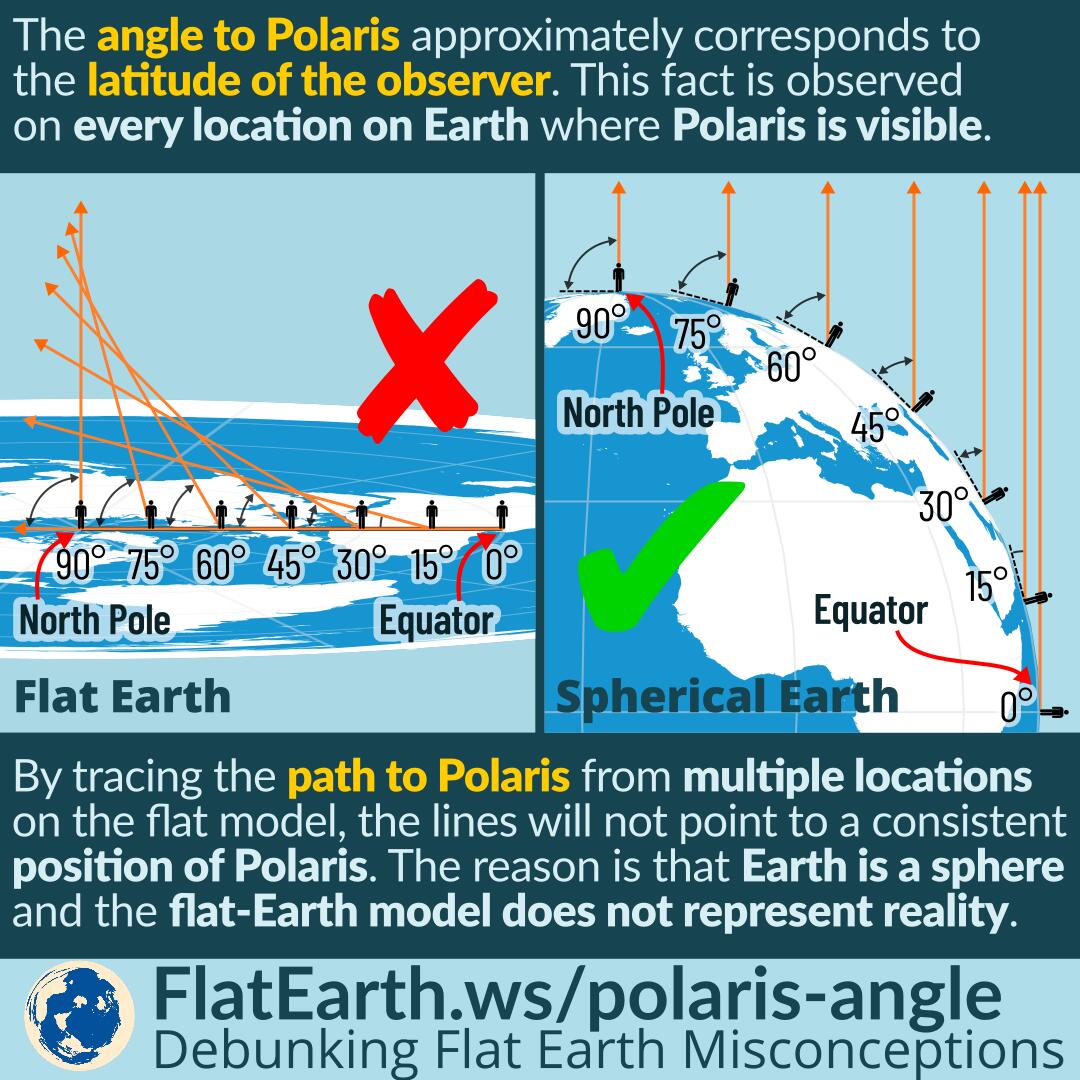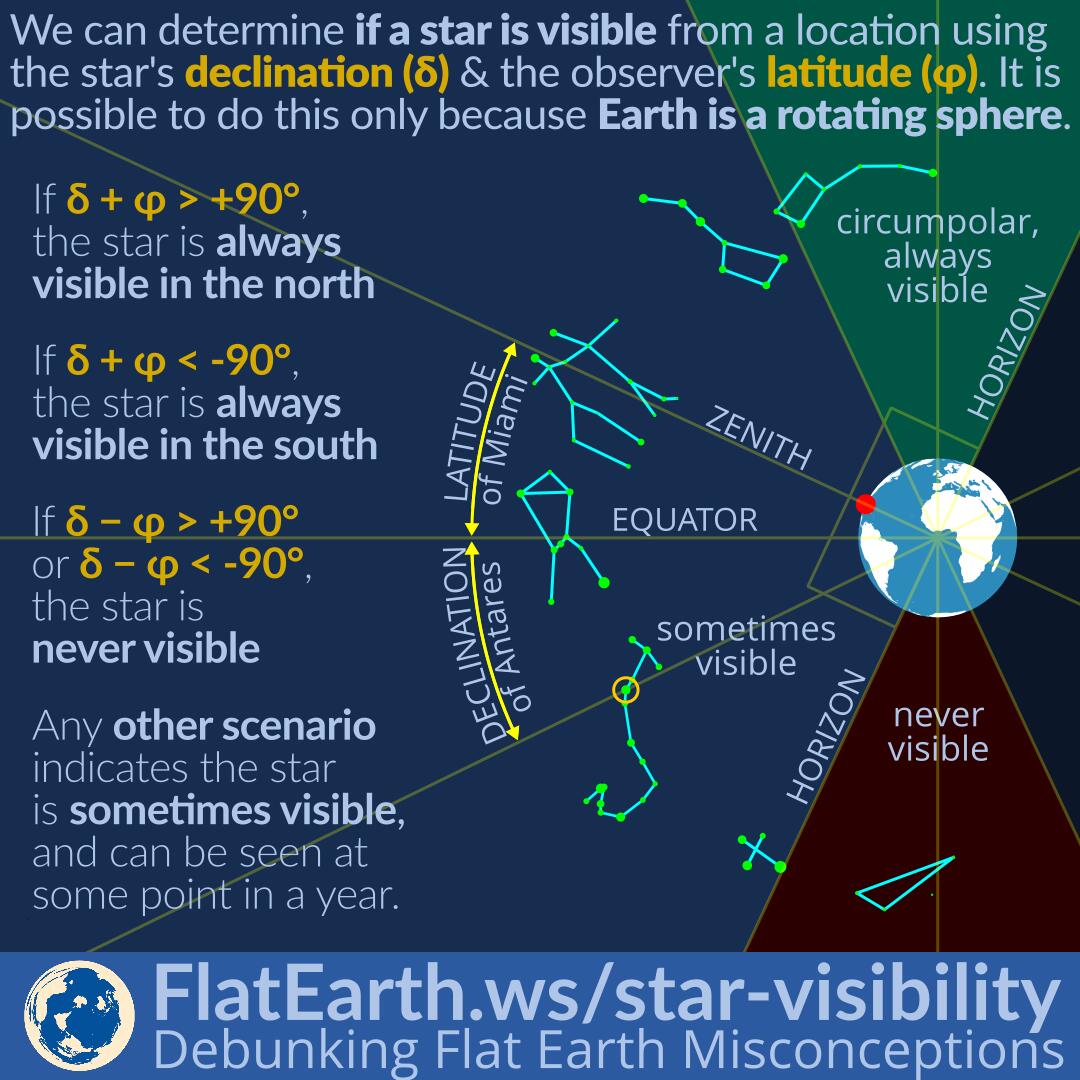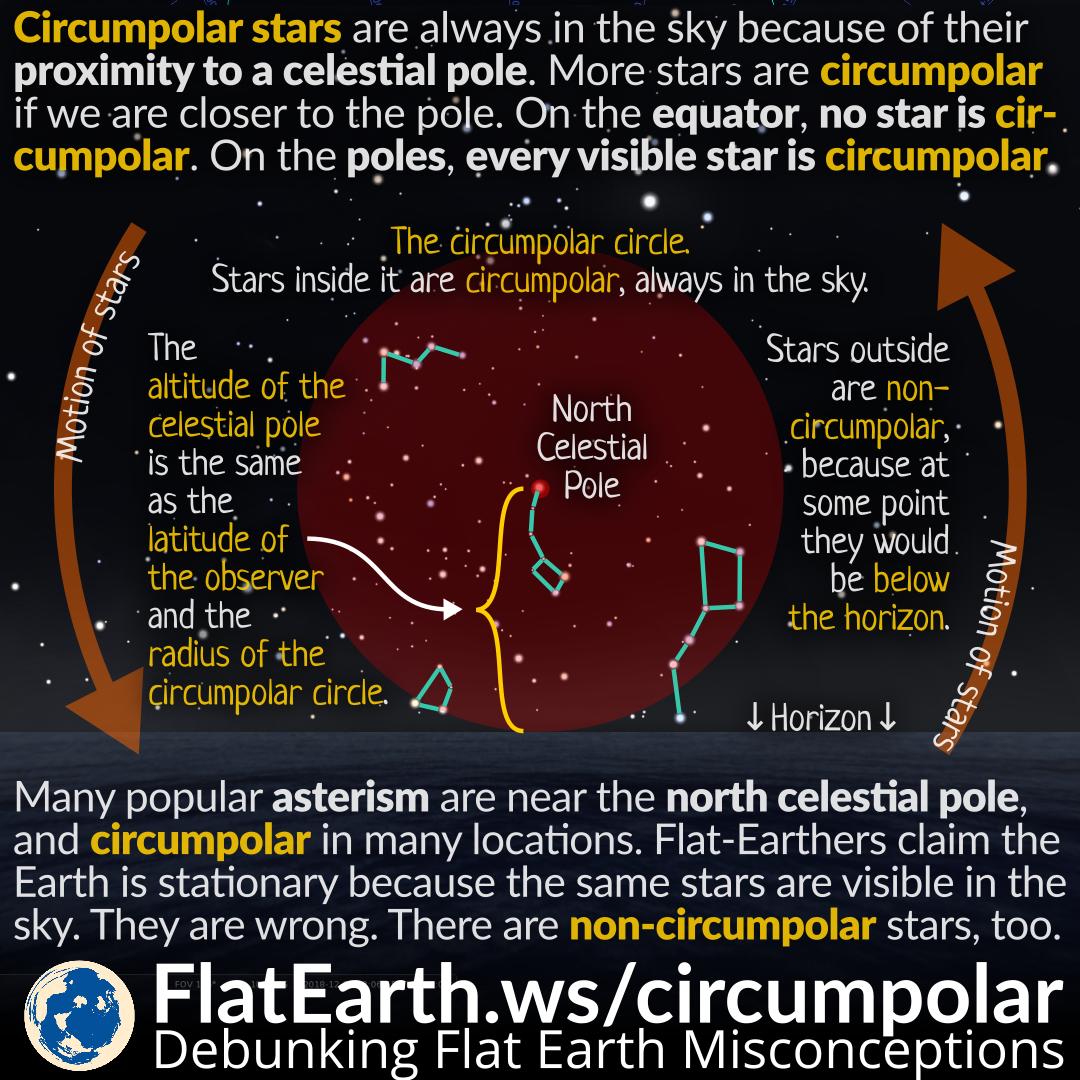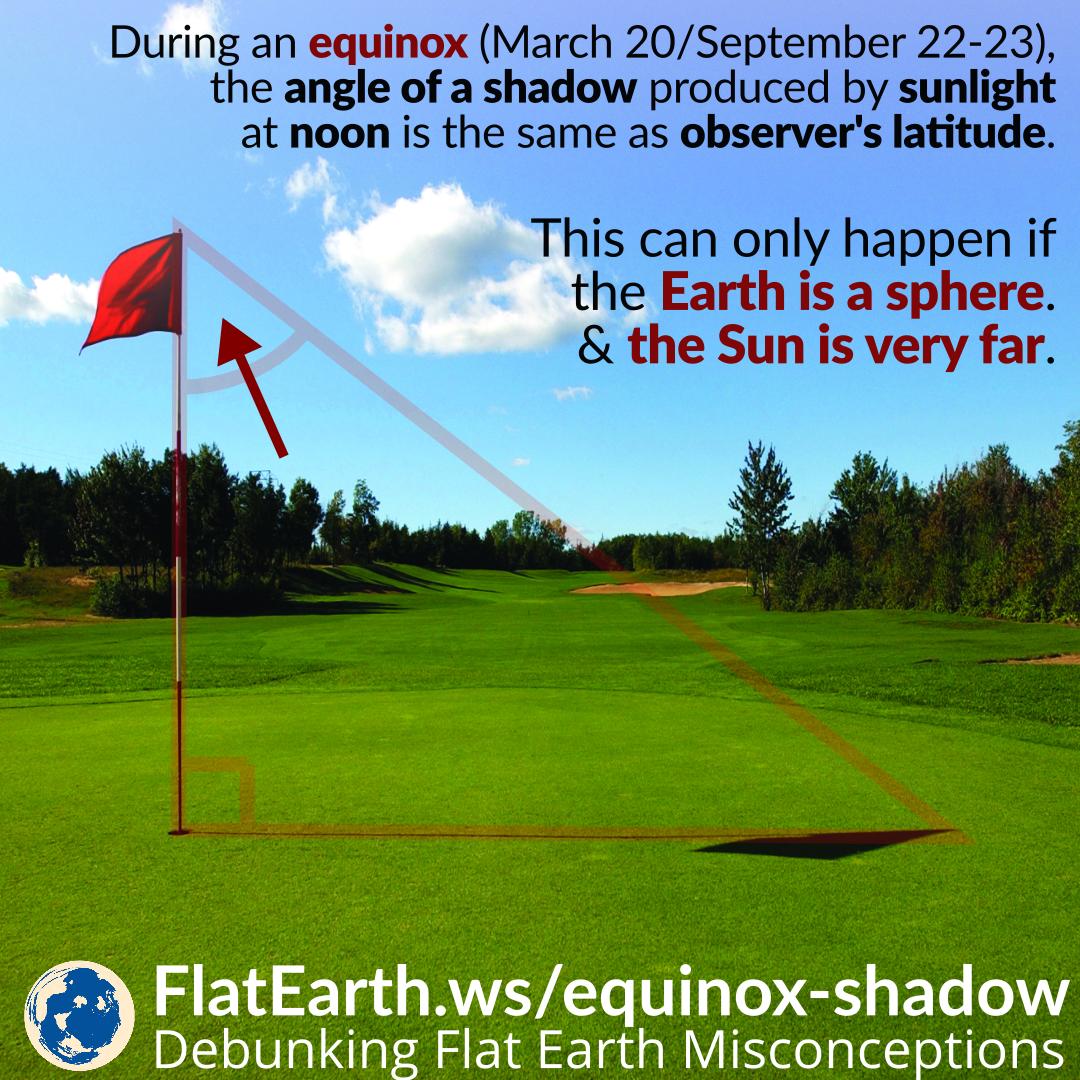The angle (or altitude) to Polaris approximately corresponds to the latitude of the observer. This fact is observed on every location on Earth where Polaris is visible.
By tracing the path to Polaris from multiple locations on the flat Earth model, the lines will not point to a consistent position of Polaris. The reason is that the Earth is a sphere and the flat Earth model does not represent reality.
Continue reading “Polaris Altitude from Multiple Locations on Earth”







